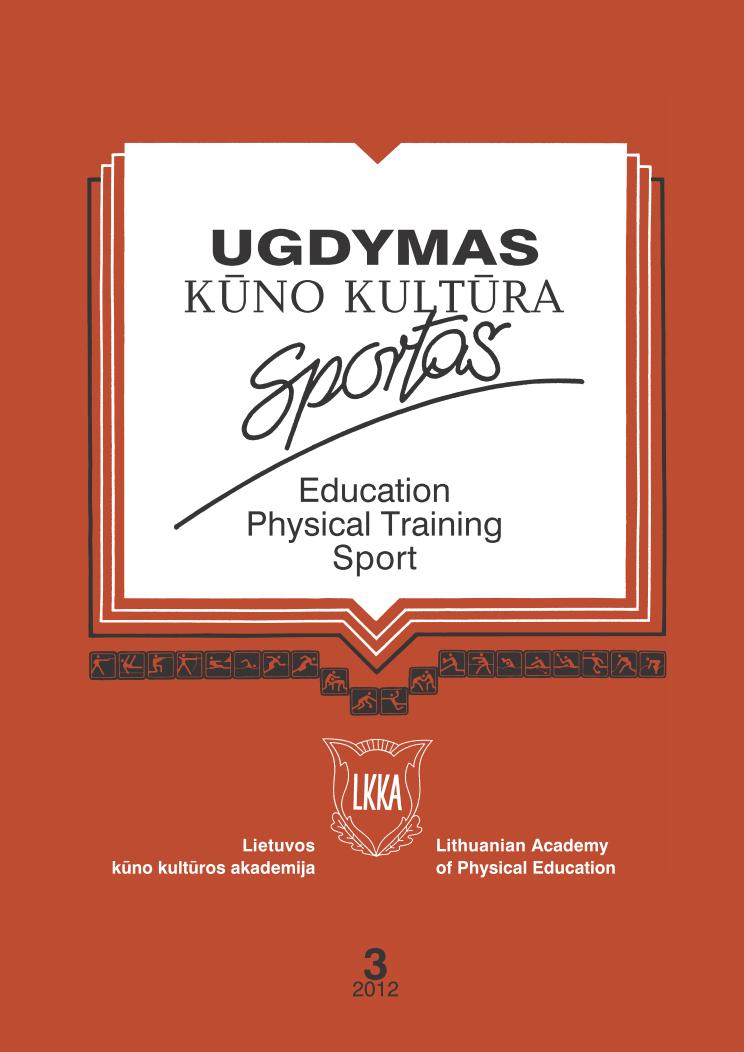The Relation between Physical Activity and Health among Highly and Moderately Active Students
Abstract
Research background and hypothesis. Lack of physical activity is influenced by a number of chronic non-
infectious, mental (Corbin et al. 2001; Golden et al., 2004) and other diseases (Katzmarzyk et al., 2003). Students’
physical activity and nutrition research remains relevant, especially for those students the future profession of which
is not related to physical activity and health.
Research aim. The aim of the study was to estimate the relation between physical activity and health among
highly and moderately active students.
Research methods. All the subjects (n = 327) were grouped according to their physical activity levels. The group
highly physically active students – female athletes (n = 32) and male athletes (n = 79) who were physically active
more than 3000 minutes per week. The group of moderate physical activity included females (n = 47) and males
(n = 169) who were physically active 600–3000 minutes per week (Ainsworth, Levy, 2004). The respondents filled
in anonymous questionnaires: the International Physical Activity Questionnaire (IPAQ). The questions dealt with the
time being physically active in the last seven days. The survey took place in February–April, 2012.
Research results. The subjects in high physical activity group gave a subjective evaluation of their physical
activity as high (53%) and moderate (32%). The subjects in the moderate physical activity group evaluated their
physical activity as moderate (60%) and high (26%). All subjects in both groups indicated that their health was good.
The headache symptoms, stomach, abdominal or back pains, sadness, depression, insomnia and dizziness were rare
or not common at all to subjects in high (63%) physical activity group. Sadness, depression, nervous tension and
irritability, and bad mood were common to subjects in moderate (59%) physical activity group. The subjects in high
physical activity group had their meals three – four times per day (76%), but subjects in moderate group ate only
two - three times per day (61%). Irregular lunch and dinner were common to subjects in moderate physical activity
group (63%).
Discussion and conclusions. Research results showed that subjects in high and moderate physical activity
groups gave correct subjective evaluations of their physical activity forms. Also subjects in high physical activity
group had breakfast, dinner and supper on regular basis and they had balanced diets more often (p < 0.05).
Keywords: physical activity, health, nutrition
Downloads
Published
Issue
Section
License
Copyright (c) 2018 Baltic Journal of Sport and Health Sciences

This work is licensed under a Creative Commons Attribution 4.0 International License.






